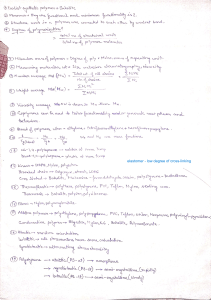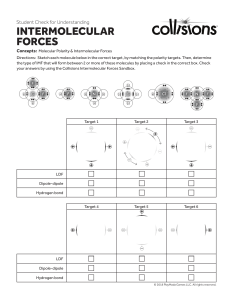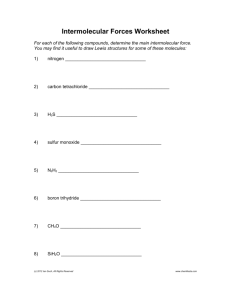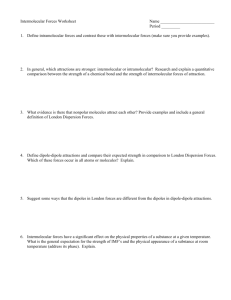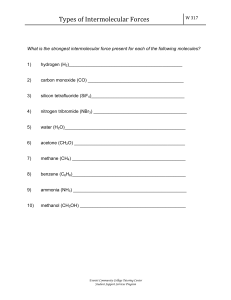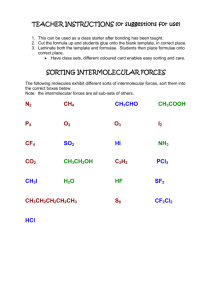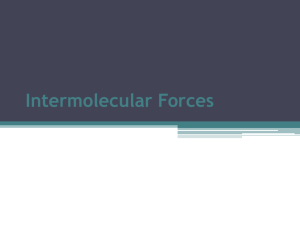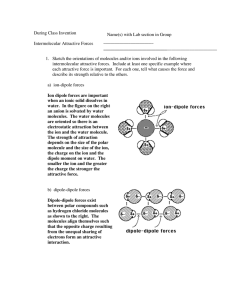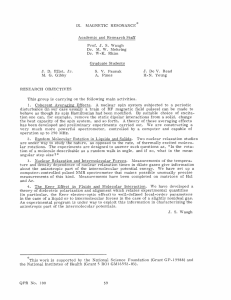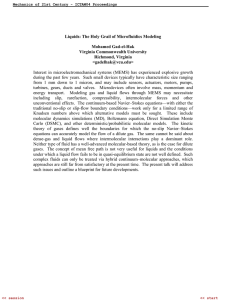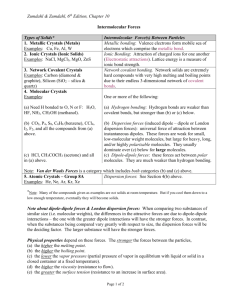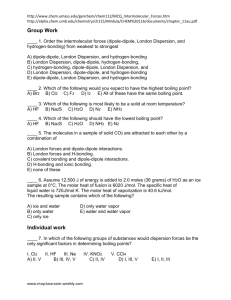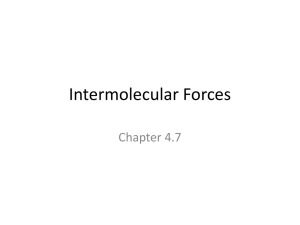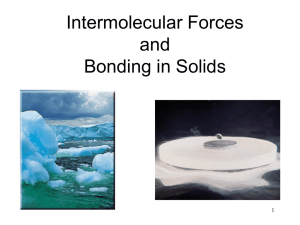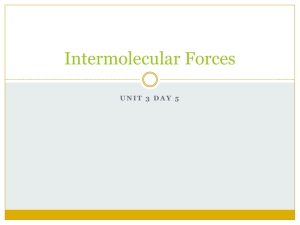AP Chemistry - Types of Solids and Intermolecular Forces Practice
advertisement
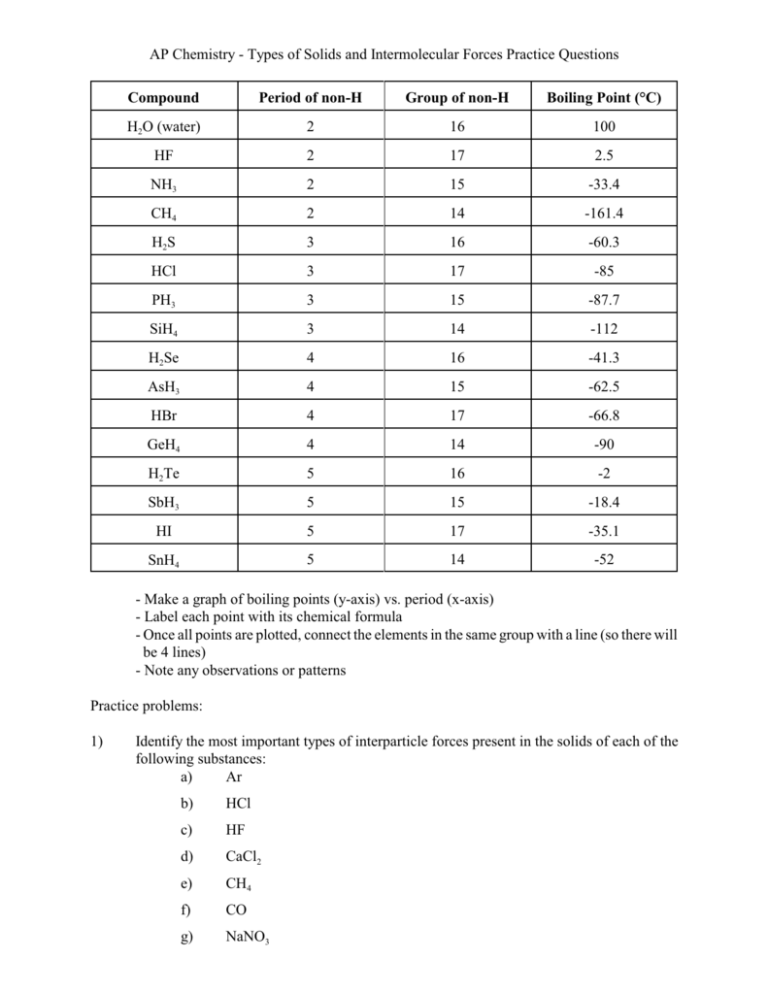
AP Chemistry - Types of Solids and Intermolecular Forces Practice Questions Compound Period of non-H Group of non-H Boiling Point (°C) H2O (water) 2 16 100 HF 2 17 2.5 NH3 2 15 -33.4 CH4 2 14 -161.4 H2S 3 16 -60.3 HCl 3 17 -85 PH3 3 15 -87.7 SiH4 3 14 -112 H2Se 4 16 -41.3 AsH3 4 15 -62.5 HBr 4 17 -66.8 GeH4 4 14 -90 H2Te 5 16 -2 SbH3 5 15 -18.4 HI 5 17 -35.1 SnH4 5 14 -52 - Make a graph of boiling points (y-axis) vs. period (x-axis) - Label each point with its chemical formula - Once all points are plotted, connect the elements in the same group with a line (so there will be 4 lines) - Note any observations or patterns Practice problems: 1) Identify the most important types of interparticle forces present in the solids of each of the following substances: a) Ar b) HCl c) HF d) CaCl2 e) CH4 f) CO g) NaNO3 2) What type of solid will each of the following substances form? a) CO2 b) SiO2 c) Si d) CH4 e) Ru f) I2 g) KBr h) H2O i) NaOH j) U k) CaCO3 l) PH3 3) What are intermolecular forces? 4) How do intermolecular forces differ from intramolecular forces? 5) What are dipole-dipole forces? 6) How do typical dipole-dipole forces differ from hydrogen boding? 7) What are London dispersion forces? 8) Compare and contrast London dispersion forces and dipole-dipole forces. 9) What is the relationship between molecular size and strength of London dispersion forces? 10) Place the major types of intermolecular forces in order of increasing strength. 11) Distinguish between the following: a) a crystalline solid and an amorphous solid b) an ionic solid and a molecular solid c) a molecular solid and a network covalent solid d) a metallic solid and a network covalent solid
